Stripe is one of the best developer tools ever built. It made payments approachable, fast, and reliable. In doing so, it raised the bar for what developers expect from infrastructure. It’s not just the API or the docs. Stripe set a new standard for how a platform can feel in your stack: composable, ergonomic, and easy to trust.
As more companies moved to SaaS and subscription-based models, Stripe saw an opportunity to expand beyond payments. Stripe Billing was built to help software companies manage recurring revenue. Not just collecting money, but handling the full lifecycle of a subscription.
At a high level, Stripe Billing lets you:
Create and manage recurring plans and subscriptions
Handle usage-based billing with metered products
Automate invoicing, proration, trials, and renewals
Support discounts, coupons, and promotion codes
These tools help SaaS companies get to market quickly, manage recurring revenue at scale, and support a wide range of pricing models without building everything from scratch.
Stripe Billing was a great starting point, but the market has moved fast. As monetization becomes more central to product and go-to-market strategy, the expectations for what a billing platform should do have grown.
Stripe now competes with platforms like Chargebee, Orb, and Metronome. All of which aim to solve more of the billing stack, especially for complex pricing models and product-driven growth. These tools reflect a shift in how SaaS companies think about monetization, not just as back-office operations, but as core infrastructure that touches product, growth, and customer success.
Here are the capabilities modern teams expect that Stripe hasn’t kept up with:
It’s not enough for a customer to choose a plan. Plans should determine feature gates and usage limits within your product. Because Stripe doesn't offer tooling to make this easy, teams are left to implement this logic themselves. Entitlement logic touches your frontend, backend, and internal tools and quickly becomes a mess to monitor, maintain, and audit.
The best teams routinely test changes and evolve their plans over time. To do this safely, you need tools to rollout new plan versions, easily support multiple different plans, and migrate customers between plans without bugs. Stripe doesn’t provide any of these tools. Without a safe way to manage plan changes, teams become hesitant to evolve their pricing. Over time, this slows down go to market velocity and creates hidden technical debt.
Product led growth works well when pricing is simple and self serve. But once you introduce sales, you need per customer overrides, custom limits, and bespoke pricing. Stripe doesn’t support these patterns cleanly. Most teams resort to manual workarounds, storing overrides in spreadsheets or custom metadata. This works at first, but it quickly becomes unmanageable as your sales team grows.
Product led growth works well when pricing is simple and self serve. But once you introduce sales, you need per customer overrides, custom limits, and bespoke pricing. Stripe doesn’t support these patterns cleanly. Most teams resort to manual workarounds, storing overrides in spreadsheets or custom metadata. That works for a few deals, but it quickly becomes unmanageable as your sales motion scales.
Stripe is the gold standard for billing infrastructure for a reason. Stripe has made handling payments, invoicing, subscription lifecycles, and global compliance simple and painless for tens of thousands of companies. Stripe is and should remain the default starting platform for most SaaS and AI products.
But as pricing models get more complex, teams need more than what Stripe was built to handle. Modern SaaS and AI companies need infrastructure that reaches into the product itself. Teams need a solution to that lets them control access, track usage events, support custom pricing, and show customers what they’re using.
Schematic isn't a replacement for Stripe, it extends Stripe into your product. Schematic gives you the tools to map pricing to entitlements, manage usage at the event level, support plan versioning and overrides, and power customer facing billing experiences. Stripe continues to power the financial layer, while Schematic handles everything connected to how pricing actually works in your product.
Schematic fills the operational and product-facing gaps that Stripe leaves open. Here's how it works in practice:
Schematic connects plans to real product behavior. You define which features, limits, and usage rules are included in each plan, and enforce them directly in your application using our SDKs or API. This becomes the source of truth for what a customer is allowed to do.

Instead of sending pre-aggregated totals to Stripe, you stream raw usage events to Schematic. We handle deduplication, attribution, aggregation, and sync the correct totals back to Stripe Billing. This gives you flexibility as your usage model evolves.
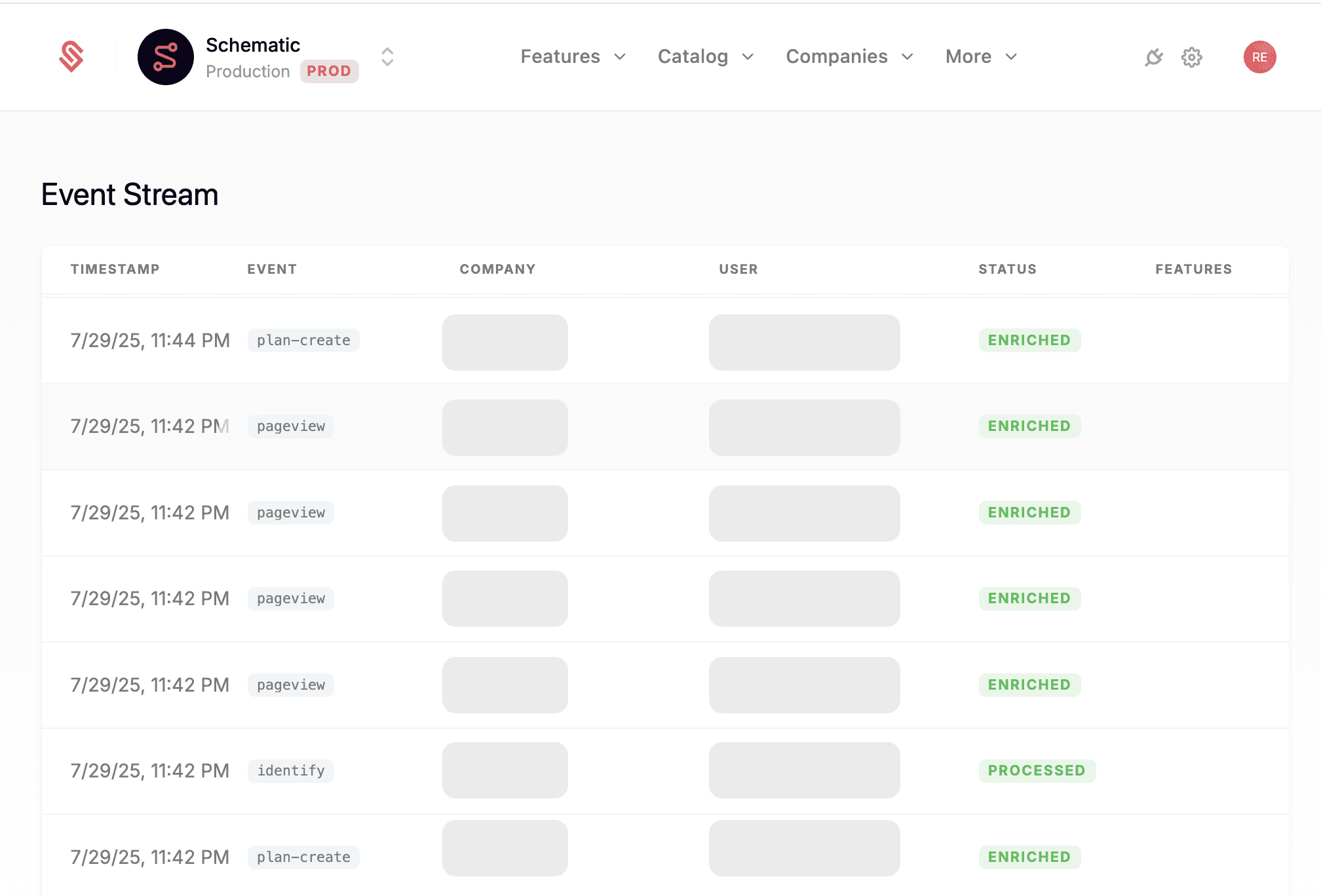
Schematic supports flat rate, usage-based, tiered, credit burndown, and hybrid pricing models out of the box. You can define how each plan calculates charges, tracks limits, and enforces usage. Pricing models are first-class, not just metadata or custom logic.
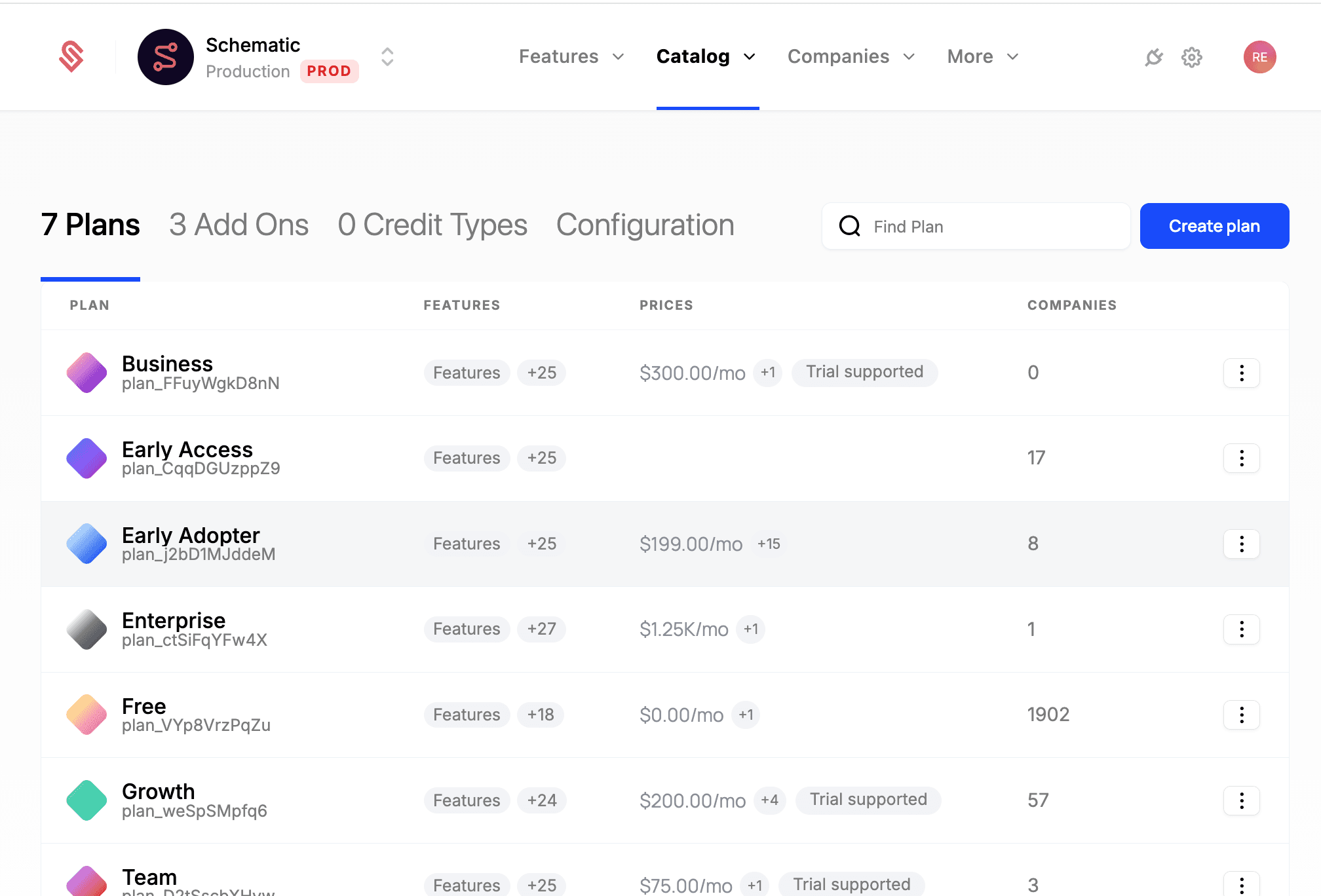
Pricing should change over time. Too often, pricing changes are disruptive to engineering teams and error prone, leading teams to be hesitant to iterate. Schematic lets you test new pricing, tweak existing plans, and migrate customers off of old plans without worry or risk.
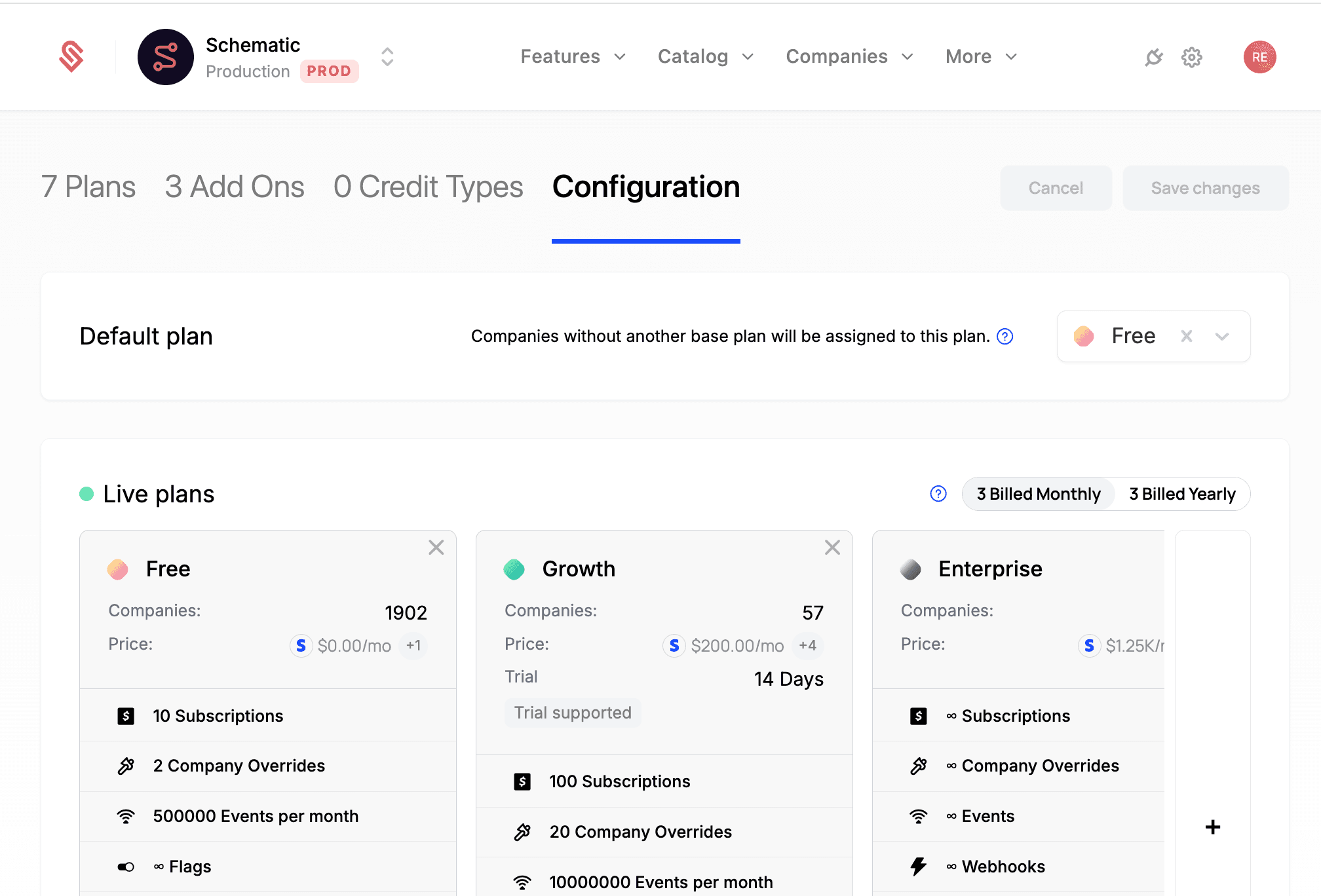
Schematic gives you a drop-in portal that shows customers what they’re using, what they have left, and what they’re entitled to. This reduces surprise overages and support tickets while increasing trust and renewal clarity.
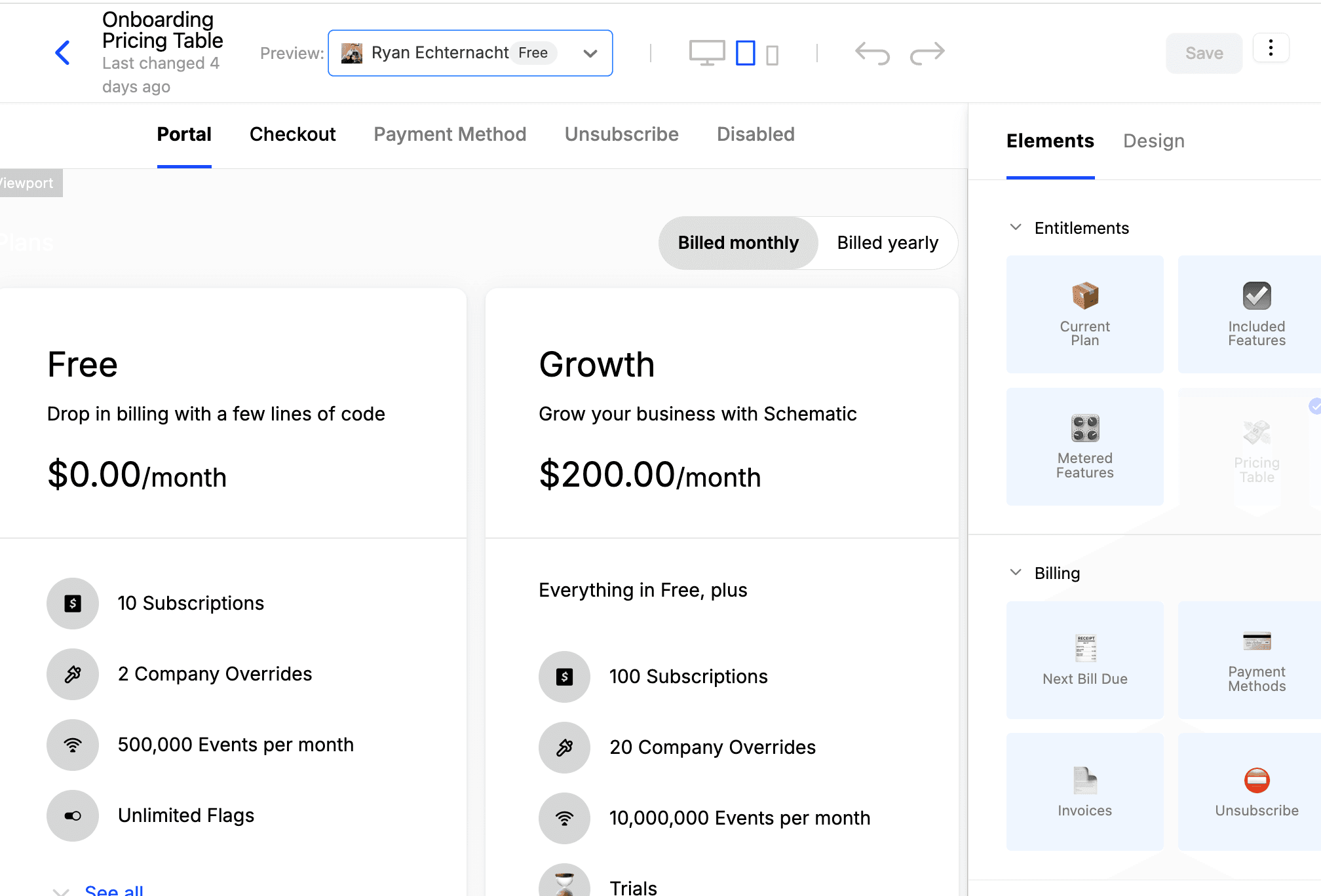
Need to override limits or pricing for a single customer? Schematic makes per customer customization first class. Sales can offer custom plans, usage thresholds, and feature flags without requiring engineering work or metadata hacks. Every override is versioned and auditable.
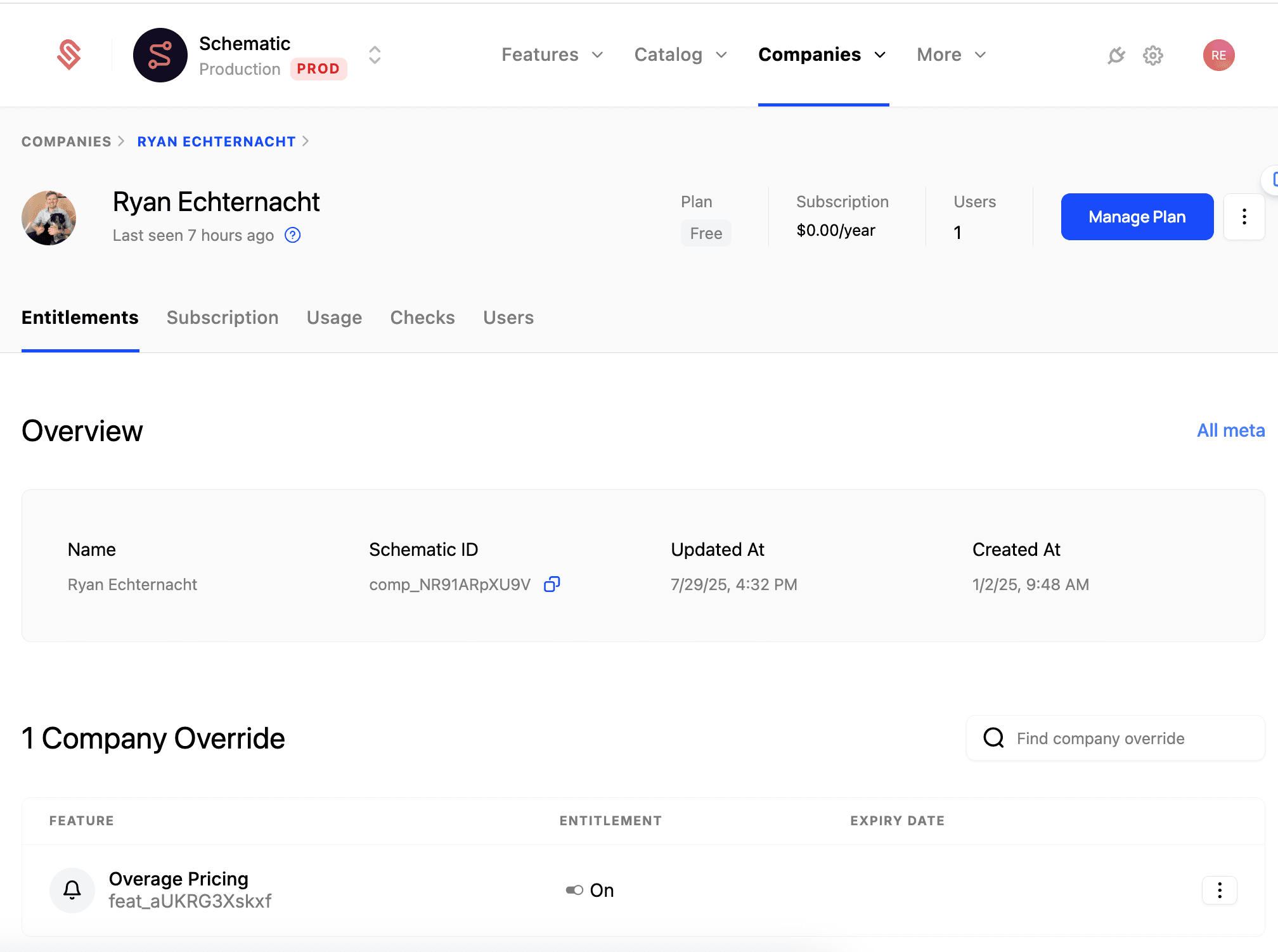
Stripe is still the best foundation for modern billing. But it’s not the whole system. Schematic gives you the missing layers, the ones that connect billing to your product, your customers, and your pricing strategy.
If you’re hitting Stripe’s limits, you don’t need to rip it out. You just need to complete the stack.
Yes, but most teams use them together. Stripe handles payments and invoicing. Schematic fills in the gaps around entitlements, usage, and pricing logic in your product.
No. Schematic extends Stripe Billing. We add the product-facing infrastructure that Stripe doesn’t handle, like usage eventing, entitlement enforcement, plan versioning, and sales overrides.
You send raw usage events to Schematic. We handle aggregation, attribution, and deduplication. Then we sync clean usage totals back to Stripe so billing stays accurate.
Schematic supports flat-rate, usage-based, tiered, credit-based, and hybrid models. You can define limits, features, and usage rules at the plan level — and override them per customer when needed.
Yes. Schematic provides a portal that shows customers what they’ve used, what’s included in their plan, and what limits they’re approaching. It’s easy to embed in your product.